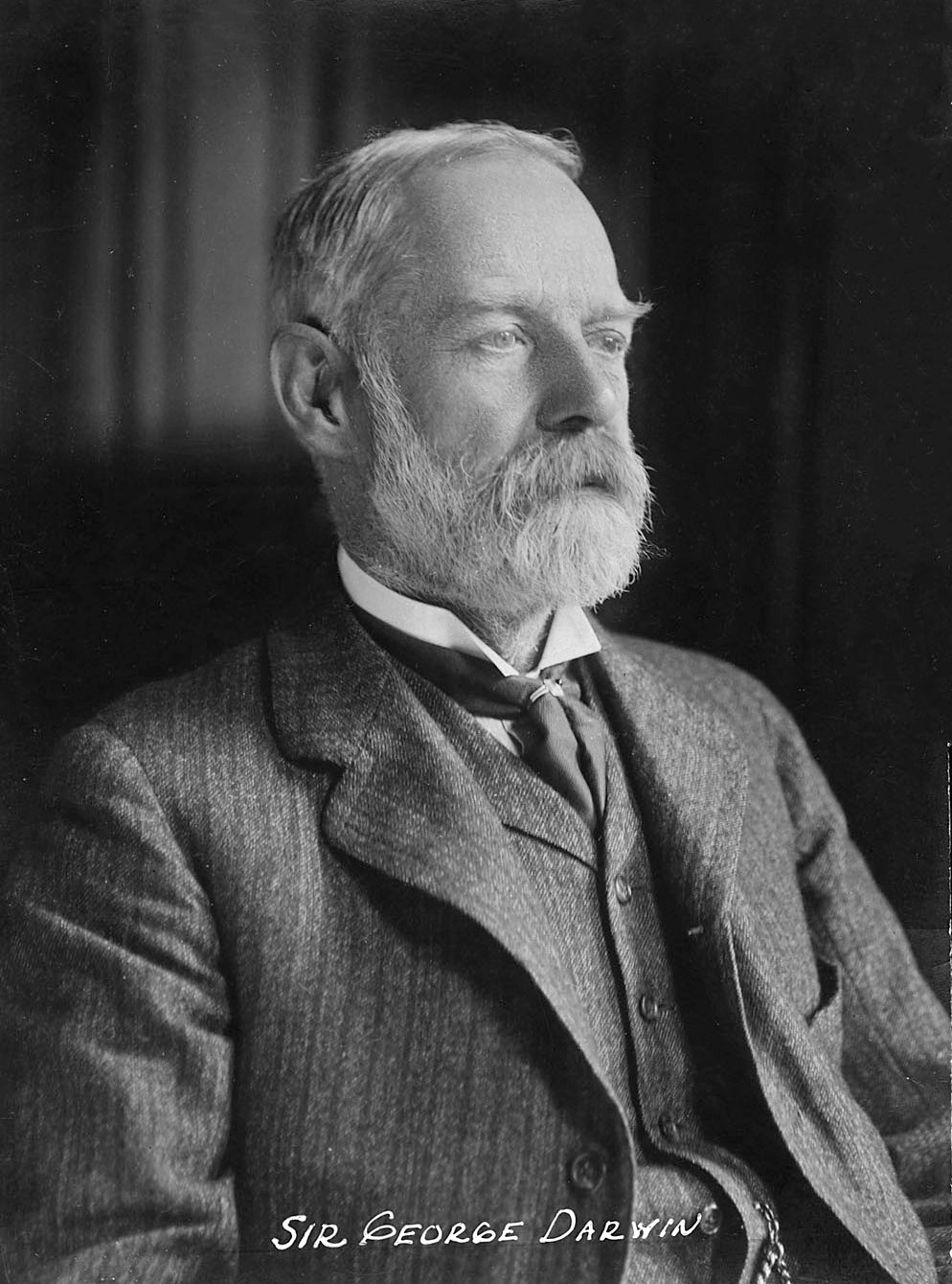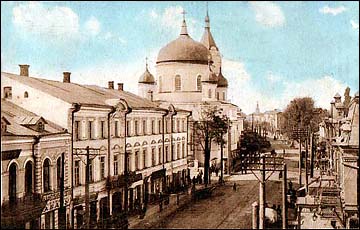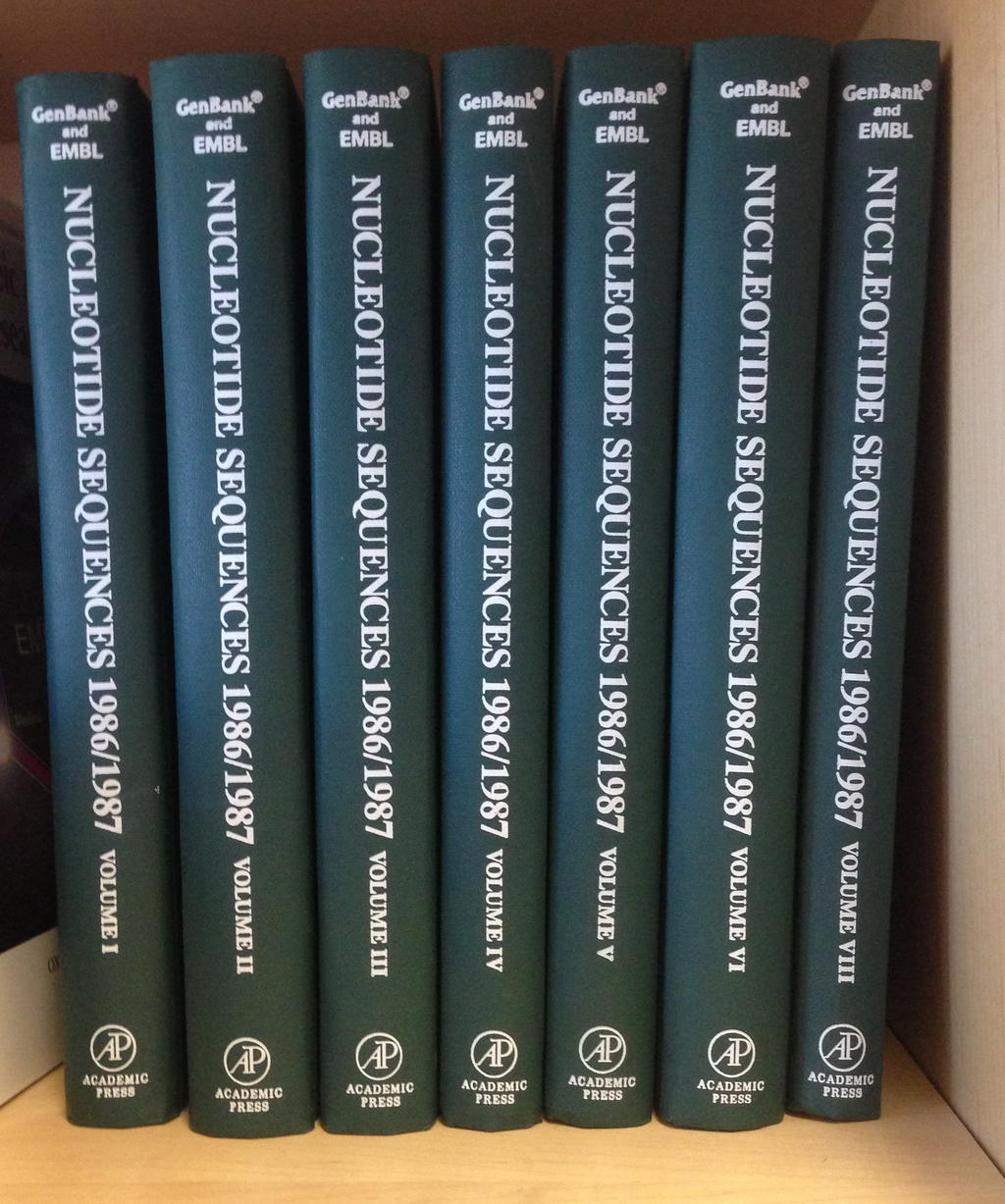|
K1a1b1a
In human mitochondrial genetics, Haplogroup K1a1b1a is a human mitochondrial DNA (mtDNA) haplogroup. The K1a1b1a mitochondrial DNA haplogroup subclade is found in Ashkenazi Jews and other populations. It is a subclade under haplogroup U'K. Origin According to National Geographic's Genographic Project, K1a1b1a has an unknown origin. The site states, "Though the origin of this lineage is not clear, it is a founding population among some Jewish Diaspora groups. Among Ashkenazi Jews, it is about 19 percent of maternal lineages. Estimates of the age of K1a1b1a vary depending on the mutation rates used. The age of K1a1b1a has been estimated at 4,800 ± 3,600 Years Ago, according to the Genographic Project. The K1a1b1a subclade is under the U'K haplogroup and descends from K1a1b1, which is thought to be an 11,500-year-old European subclade of mostly non Jewish origins. Haplogroup K falls under the old U8 grouping. Some of the Basque people of Spain and France fall under the U8a s ... [...More Info...] [...Related Items...] OR: [Wikipedia] [Google] [Baidu] |
Haplogroup U'K (mtDNA)
A haplotype is a group of alleles in an organism that are inherited together from a single parent, and a haplogroup (haploid from the el, ἁπλοῦς, ''haploûs'', "onefold, simple" and en, group) is a group of similar haplotypes that share a common ancestor with a single-nucleotide polymorphism mutation. More specifically, a haplogroup is a combination of alleles at different chromosomal regions that are closely linked and that tend to be inherited together. As a haplogroup consists of similar haplotypes, it is usually possible to predict a haplogroup from haplotypes. Haplogroups pertain to a single line of descent. As such, membership of a haplogroup, by any individual, relies on a relatively small proportion of the genetic material possessed by that individual. Each haplogroup originates from, and remains part of, a preceding single haplogroup (or paragroup). As such, any related group of haplogroups may be precisely modelled as a nested hierarchy, in which each set ... [...More Info...] [...Related Items...] OR: [Wikipedia] [Google] [Baidu] |
Hypervariable Region
A hypervariable region (HVR) is a location within nuclear DNA or the D-loop of mitochondrial DNA in which base pairs of nucleotides repeat (in the case of nuclear DNA) or have substitutions (in the case of mitochondrial DNA). Changes or repeats in the hypervariable region are highly polymorphic. Mitochondrial There are two MITOCHONDRIAL hypervariable regions used in human mitochondrial genealogical DNA testing. HVR1 is considered a "low resolution" region and HVR2 is considered a "high resolution" region. Getting HVR1 and HVR2 DNA tests can help determine one's haplogroup. In the revised Cambridge Reference Sequence of the human mitogenome, the most variable sites of HVR1 are numbered 16024-16383 (this subsequence is called HVR-I), and the most variable sites of HVR2 are numbered 57-372 (''i.e.,'' HVR-II) and 438-574 (''i.e.,'' HVR-III).''PhyloTree mt''"Annotated mtDNA reference sequences: revised Cambridge Reference Sequence (rCRS)" Retrieved on 4 February 2016. In some bony f ... [...More Info...] [...Related Items...] OR: [Wikipedia] [Google] [Baidu] |
Human Mitochondrial DNA Haplogroups
Humans (''Homo sapiens'') are the most abundant and widespread species of primate, characterized by bipedality, bipedalism and exceptional cognitive skills due to a large and complex Human brain, brain. This has enabled the development of advanced tools, culture, and language. Humans are highly social and tend to live in complex social structures composed of many cooperating and competing groups, from family, families and kinship networks to political state (polity), states. Social interactions between humans have established a wide variety of values, norm (sociology), social norms, and rituals, which bolster human society. Its intelligence and its desire to understand and influence the environment and to explain and manipulate Phenomenon, phenomena have motivated humanity's development of science, philosophy, mythology, religion, and other fields of study. Although some scientists equate the term ''humans'' with all members of the genus ''Homo'', in common usage, it generall ... [...More Info...] [...Related Items...] OR: [Wikipedia] [Google] [Baidu] |
Population Genetics
Population genetics is a subfield of genetics that deals with genetic differences within and between populations, and is a part of evolutionary biology. Studies in this branch of biology examine such phenomena as adaptation, speciation, and population structure. Population genetics was a vital ingredient in the emergence of the modern evolutionary synthesis. Its primary founders were Sewall Wright, J. B. S. Haldane and Ronald Fisher, who also laid the foundations for the related discipline of quantitative genetics. Traditionally a highly mathematical discipline, modern population genetics encompasses theoretical, laboratory, and field work. Population genetic models are used both for statistical inference from DNA sequence data and for proof/disproof of concept. What sets population genetics apart from newer, more phenotypic approaches to modelling evolution, such as evolutionary game theory and adaptive dynamics, is its emphasis on such genetic phenomena as dominance, epi ... [...More Info...] [...Related Items...] OR: [Wikipedia] [Google] [Baidu] |
Human Mitochondrial Genetics
Human mitochondrial genetics is the study of the genetics of human mitochondrial DNA (the DNA contained in human mitochondria). The human mitochondrial genome is the entirety of hereditary information contained in human mitochondria. Mitochondria are small structures in cells that generate energy for the cell to use, and are hence referred to as the "powerhouses" of the cell. Mitochondrial DNA (mtDNA) is not transmitted through nuclear DNA (nDNA). In humans, as in most multicellular organisms, mitochondrial DNA is inherited only from the mother's ovum. There are theories, however, that paternal mtDNA transmission in humans can occur under certain circumstances. Mitochondrial inheritance is therefore non-Mendelian, as Mendelian inheritance presumes that half the genetic material of a fertilized egg (zygote) derives from each parent. Eighty percent of mitochondrial DNA codes for mitochondrial RNA, and therefore most mitochondrial DNA mutations lead to functional problems, ... [...More Info...] [...Related Items...] OR: [Wikipedia] [Google] [Baidu] |
Genetic Genealogy
Genetic genealogy is the use of genealogical DNA tests, i.e., DNA profiling and DNA testing, in combination with traditional genealogical methods, to infer genetic relationships between individuals. This application of genetics came to be used by family historians in the 21st century, as DNA tests became affordable. The tests have been promoted by amateur groups, such as surname study groups or regional genealogical groups, as well as research projects such as the Genographic Project. As of 2019, about 30 million people had been tested. As the field developed, the aims of practitioners broadened, with many seeking knowledge of their ancestry beyond the recent centuries, for which traditional pedigrees can be constructed. History The investigation of surnames in genetics can be said to go back to George Darwin, a son of Charles Darwin and Charles' first cousin Emma Darwin. In 1875, George Darwin used surnames to estimate the frequency of first-cousin marriages and calculated t ... [...More Info...] [...Related Items...] OR: [Wikipedia] [Google] [Baidu] |
Genealogical DNA Test
A genealogical DNA test is a DNA-based test used in genetic genealogy that looks at specific locations of a person's genome in order to find or verify ancestral genealogical relationships, or (with lower reliability) to estimate the ethnic mixture of an individual. Since different testing companies use different ethnic reference groups and different matching algorithms, ethnicity estimates for an individual vary between tests, sometimes dramatically. Three principal types of genealogical DNA tests are available, with each looking at a different part of the genome and being useful for different types of genealogical research: autosomal (atDNA), mitochondrial (mtDNA), and Y-DNA. Autosomal tests may result in a large number of DNA matches to both males and females who have also tested with the same company. Each match will typically show an estimated degree of relatedness, i.e., a close family match, 1st-2nd cousins, 3rd-4th cousins, etc. The furthest degree of relationship is u ... [...More Info...] [...Related Items...] OR: [Wikipedia] [Google] [Baidu] |
Donald Prell
Donald B. Prell (July 7, 1924 – July 28, 2020) was an American World War II veteran, venture capitalist and futurist who created ''Datamation'', the first magazine devoted solely to the computer hardware and software industry. Early life Prell was born in Los Angeles, California, and graduated from Los Angeles High School in the summer of 1942. In his freshman year at UCLA, he enlisted in the US Army. In 1944, aged 19, he graduated from Officer Candidate School, Ft. Benning, Georgia, and was commissioned a 2nd Lieutenant, Infantry. Serving in the European Theater of Operations in command of the second platoon of the Anti-Tank Company, 422nd Regiment, 106th Division, during the Battle of the Bulge, December 16–19, 1944, he was wounded and captured. Captured at the same time as Prell was Richard Bordeaux Parker, who commanded the first platoon of the Anti-Tank Company. On March 27, 1945, he was briefly freed by Task Force Baum, a clandestine U.S. Army mission to liberate ... [...More Info...] [...Related Items...] OR: [Wikipedia] [Google] [Baidu] |
Zhitomir
Zhytomyr ( uk, Жито́мир, translit=Zhytomyr ; russian: Жито́мир, Zhitomir ; pl, Żytomierz ; yi, זשיטאָמיר, Zhitomir; german: Schytomyr ) is a city in the north of the western half of Ukraine. It is the administrative center of Zhytomyr Oblast (province), as well as the administrative center of the surrounding Zhytomyr Raion (district). The city of Zhytomyr is not a part of Zhytomyr Raion: the city itself is designated as its own separate raion within the oblast; moreover Zhytomyr consists of two so-called "raions in a city": Bohunskyi Raion and Koroliovskyi Raion (named in honour of Sergey Korolyov). Zhytomyr occupies an area of . Its population is Zhytomyr is a major transport hub. The city lies on a historic route linking the city of Kyiv with the west through Brest. Today it links Warsaw with Kyiv, Minsk with Izmail, and several major cities of Ukraine. Zhytomyr was also the location of Ozerne airbase, a key Cold War strategic aircraft base south ... [...More Info...] [...Related Items...] OR: [Wikipedia] [Google] [Baidu] |
Familytreedna
FamilyTreeDNA is a division of Gene by Gene, a commercial genetic testing company based in Houston, Texas. FamilyTreeDNA offers analysis of autosomal DNA, Y-DNA, and mitochondrial DNA to individuals for genealogical purpose. With a database of more than two million records, it is the most popular company worldwide for Y-DNA and mitochondrial DNA, and the fourth most popular for autosomal DNA. In Europe, it is the most common also for autosomal DNA. FamilyTreeDNA as a division of Gene by Gene were acquired by MYDNA, Inc., an Australian company in January 2021. History Concept and founding (2000–2002) FamilyTreeDNA was founded based on an idea conceived by Bennett Greenspan, a lifelong entrepreneur and genealogy enthusiast. In 1999, Greenspan had entered semi-retirement and was working on his family history. He began work on his mother's Nitz lineage. When faced with a roadblock in his work, he remembered two cases of genetics being used to prove ancestry that had recent ... [...More Info...] [...Related Items...] OR: [Wikipedia] [Google] [Baidu] |
Genbank
The GenBank sequence database is an open access, annotated collection of all publicly available nucleotide sequences and their protein translations. It is produced and maintained by the National Center for Biotechnology Information (NCBI; a part of the National Institutes of Health in the United States) as part of the International Nucleotide Sequence Database Collaboration (INSDC). GenBank and its collaborators receive sequences produced in laboratories throughout the world from more than 500,000 formally described species. The database started in 1982 by Walter Goad and Los Alamos National Laboratory. GenBank has become an important database for research in biological fields and has grown in recent years at an exponential rate by doubling roughly every 18 months. Release 250.0, published in June 2022, contained over 17 trillion nucleotide bases in more than 2,45 billion sequences. GenBank is built by direct submissions from individual laboratories, as well as from bulk submis ... [...More Info...] [...Related Items...] OR: [Wikipedia] [Google] [Baidu] |
DNA Sequencing
DNA sequencing is the process of determining the nucleic acid sequence – the order of nucleotides in DNA. It includes any method or technology that is used to determine the order of the four bases: adenine, guanine, cytosine, and thymine. The advent of rapid DNA sequencing methods has greatly accelerated biological and medical research and discovery. Knowledge of DNA sequences has become indispensable for basic biological research, DNA Genographic Projects and in numerous applied fields such as medical diagnosis, biotechnology, forensic biology, virology and biological systematics. Comparing healthy and mutated DNA sequences can diagnose different diseases including various cancers, characterize antibody repertoire, and can be used to guide patient treatment. Having a quick way to sequence DNA allows for faster and more individualized medical care to be administered, and for more organisms to be identified and cataloged. The rapid speed of sequencing attained with modern D ... [...More Info...] [...Related Items...] OR: [Wikipedia] [Google] [Baidu] |







